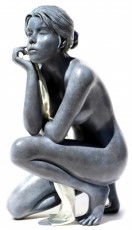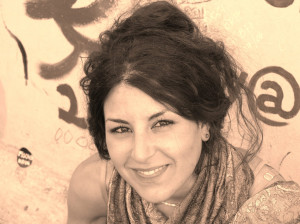
The art of representing emotions

About the exhibition "Le théâtre des émotions" at the Musée Marmottan Monet in Paris until 21 August 2022.
It is fascinating to note that emotions have not always marked the characters in paintings. We often forget this, so much so that the virtuosity of artists in translating human feelings amazes us today, but countless perfectly inexpressive faces populate the history of art, with their beautiful alabaster profiles and their impeccable posture in the most dramatic circumstances. Not least until the Middle Ages, when painters had to refer to the codes listed in Cesare Ripa's "Iconology", published in 1593, to represent "human virtues, vices, feelings and passions" only through symbolic objects. Like the handkerchief in the left hand of a "Weeping Saint Magdalene" from 1525, whose features remain marbled while she is supposedly overwhelmed by the death of Christ!
In nearly eighty works of art, from private collections as well as prestigious national and international museums, the Musée Marmottan Monet is presenting "The Theatre of Emotions" until 21 August in Paris, a highly sensitive exhibition that traces the history of emotions and their pictorial expression from the 14th to the 21st century. From the mute medieval ivories to their screaming sublimation in Jean Fautrier's "Têtes d'otages" (Hostage Heads) in 1945, via a "Melancholy by Dürer" dated 1514, and a "Jeune fille pleurant sa colombe morte" (Young girl crying for her dead dove) by Jeanne-Elisabeth Chaudet in 1805, Louis-Léopold Boilly's "Thirty-five Heads of Expression" from around 1825, Charles-Louis Müller's "Rachel in Lady Macbeth", where terror confers madness, but also Emile Signol's "La Folie de la fiancée de Lammermoor" from 1850, Pablo Picasso's "La Suppliante" from 1937... all expressions are illustrated here, from suffering to joy, from enthusiasm to terror, from pleasure to pain.
Human sensitivity is thus exposed in all its diversity. But above all, its multiple nuances reveal how much emotions have varied over time, how their manifestations have shifted, how their meaning has been interpreted in different ways... Artists' views on emotions have never ceased to evolve, depending on aesthetic and scientific reflections, or historical events.
The collaboration between Georges Vigarello, historian, professor of philosophy and eminent specialist in the relationship to the body in our Western societies, and Dominique Lobstein, art historian, offers to reread a subtle and fascinating range of works of art under the prism of the emotional register. At a time when psychology, traumas and affects have never aroused so much interest, this exhibition, which reveals their impact on the visual arts, is particularly meaningful, suggesting the endless repertoire of emotional resonances of our inner world. In eight sections illustrating the slow transcription of emotions by artists and its evolution over time, it restores the way in which the Western psyche was slowly constituted, the insensitive unfolding of its staging over time, its hidden sides, its particularities.
For example, the discovery of perspective during the Renaissance did much to promote the quest for expressiveness, as did the advent of oil painting at the end of the Middle Ages, whose transparent layers took so long to dry that they allowed painters to take the time to carefully model the expressions of faces. The advent of live models will also change everything, as we will see with the painters of the Caravaggio movement whose desire was to get as close as possible to human nature. In her article for Beaux Arts Magazine, Eva Bensard reminds us that the famous "Mona Lisa" and her enigmatic smile are one of the first examples of the representation of the inner life of a model. "The attention of painters is tightening on the physiognomy. The features became more individual, the looks more animated. The psyche was at the heart of artistic preoccupations in the 16th century and even more so in the 17th century. Yes, painters became stage directors and choreographers. A veritable theatre of emotions was developed, and religious works of art were not left out, with their saints suddenly swooning, their heads tipping over and their mouths half-opening, evoking both carnal and mystical transports, as witnessed by Bernini's famous sculpture of the "Ecstasy of Saint Teresa".
The strength of the exhibition at the Musée Marmottan Monet, which takes us from laughter to tears and from ecstasy to melancholy, also lies in the masterly demonstration that every era has its affects. By showing, for example, with Fragonard's famous "Lock" that the 18th century glorified the last fires of libertinage, while painters such as Jean Siméon Chardin or Jean-Baptiste Greuze were committed to depicting the family, tenderness and the simple pleasures of life, it shows to what extent artists also painted the mood of the times. And how much their representations of emotions, formerly called "passions of the soul", testify by being recontextualized to major changes in the culture, mores and mentalities of an era. The 20th century saw the advent of pure colour, which probed the most intimate torments, the torments of melancholy, love and creation as never before. Painting was freed from its last shackles, Impressionism was followed by all the avant-garde movements and the artist's emotions took over. All the better to make the viewer's emotions spring forth.





































































